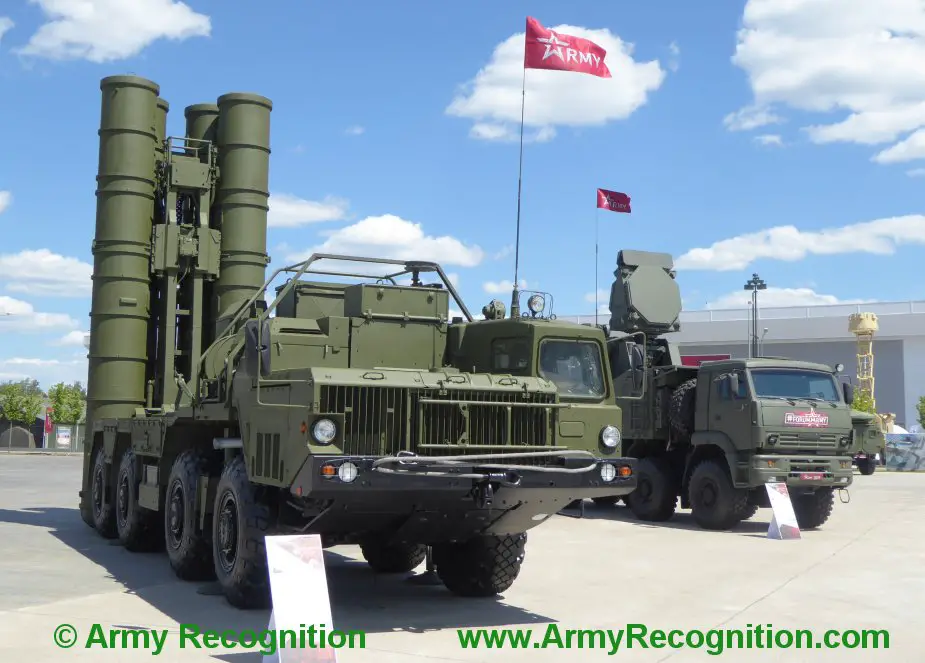Russian S-300 and S-400 air defense systems to get new guided missiles
The Russian Defense Ministry has decided to upgrade S-400 and S-300PM air defense systems. The launchers will be able to simultaneously fire long-range and short-range missiles. The missiles will be chosen according to the tactical situation.
Follow Army Recognition on Google News at this link

S-400 Triumf air defense system (Picture source: Army Recognition)
So far, S-300 and S-400 are armed with a preset type of missiles. To replace them, it is necessary to withdraw the launcher from position and rearm it. Experts believe the upgraded launchers will radically increase air defense capabilities and create multi-layered defense to destroy any target, the Izvestia daily writes.
The upgrade will involve the latest operational options of S-300. Medium-range missiles with active homing warheads will expand the capabilities of the weapons armed with 48N6 and 40N6 guided missiles. The use of such a combination was tested by the 185th combat training center of the Aerospace Forces. Each transportation-launch container can be replaced by four smaller containers with 9M96 medium-range missiles.
The latest and exported S-400 can already combine the missiles. The Turkish Defense Ministry has published photos of preparations for an exercise which is to engage S-400. One transportation launcher carried two types of various range missiles. (Notice that an actual live fire test recently conducted by Turkey has provoked a serious ire from Washington).
The combination of various missiles will help save the round of munitions, former Air Force Deputy Commander-in-Chief for CIS air defense Aitech Bizhev said. “It is necessary to save costly missiles on less important targets. The decision on the engagement of various missiles is made according to the distance and class of an air target. Why should you fire a long-range missile to 50 km if you can down the target by a close-range missile? Various missiles are necessary to destroy a light aircraft and a strategic bomber. All types of missiles are necessary to repel a massive air raid. The project is not technically difficult. There is a single control system, the main engines and warheads differ,” he said.
Old launchers engage semi-active homing warheads, Bizhev said. The target is illuminated by a radar, and the missile follows a reflected signal. The weapon is more independent with an active warhead. It is more reliable and the destruction chance is close to 99 percent.
At present, Pantsir antiaircraft missile-gun systems operate in S-400 regiments to intercept small targets, such as helicopters and drones. They protect S-400 on the march and in positions, increase the firepower and save long-range missiles on low-priority targets. S-300 units do not have such batteries.

5P85SM TEL for S-300PM missile system (Picture source: Vitaly Kuzmin)
9M96 missile has been designed since 1990s and is now delivered to the troops. It was initially decided to design it as a universal missile both for warships and ground weapons. S-350 Vityaz medium-range launchers and shipborne Poliment-Redut carried by frigates of project 22350 and corvettes of projects 20380 and 20385 are currently armed with it.
The missile family has two main options. The basic 9M96 has a range of 40 km and an altitude of 20 km. 9M96M has the same size and payload, but is equipped with a more powerful engine and can hit targets at a distance of 120 km and an altitude of 35 km. The characteristics allow intercepting short-range ballistic missiles.
9M96 has a combined guidance system. The inertial homing system switches on after the launch. There is a possibility of radio adjustment by the launcher in the main flight section. The missile switches on its own radar near the target and independently searches for it. It allows destroying objects outside direct radio visibility. It is important for the defense against low-altitude targets, such as cruise missiles, the Izvestia said.
© Copyright 2020 TASS / Army Recognition Group SPRL. All rights reserved. This material may not be published, broadcast, rewritten or redistributed.


























